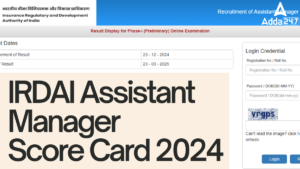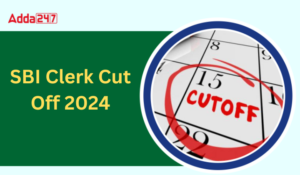Directions (1-3): Question consists of Five statements followed by five conclusions. Consider the given statements to be true even if they seem to be at variance with commonly known facts. Read all the conclusions and then decide which of the given conclusions does not logically follow from the given statements using all statements together.
Q1. Statements: All fiscal is budget. Some fiscal is report. All report is amount. No amount is deficit. Some deficit is tax.
Conclusions:
(a) Some fiscal is amount.
(b) Some report is budget.
(c) No report is deficit.
(d) All amount being tax is a possibility.
(e) Some report being deficit is a possibility.
Q2. Statements: Some white is black. All black is green. No black is violet. All violet is red. Some violet is yellow.
Conclusions:
(a) Some white is green.
(b) Some white is not violet.
(c) Some green is not violet.
(d) Some yellow is not red.
(e) All black being red is a possibility.
Q3. Statements: Some car is bus. All bus is truck. No truck is vehicle. All airplane is vehicle. Some airplane is helicopter.
Conclusions:
(a) Some car is truck.
(b) Some car is not vehicle.
(c) No bus is vehicle.
(d) All bus being vehicle is a possibility.
(e) Some helicopter is vehicle.
Directions (4-5): In the questions below are given two conclusions followed by five set of statements. You have to choose the correct set of statements that logically satisfies given conclusions either definitely or possibly. Assume the given statements to be true even if they seem to be at variance from commonly known facts.
Q4. Conclusions: No computer is device. Some network is electronics.
Statements:
(a) Some mobile is phone. All phone is network. Some network is computer. All computer is electronics. No electronics is device.
(b) All mobile is network. No network is phone. All computer is phone. Some computer is electronics. All electronics is device.
(c) All mobile is phone. Some mobile is network. Some network is computer. No computer is electronics. All device is electronics.
(d) All mobile is electronics. Some mobile is phone. No phone is network. All computer is network. Some computer is device.
(e) None of these.
Q5. Conclusions: Some samsung is nokia. Some apple is not nokia.
Statements:
(a) Some oppo is lava. All lava is nokia. No nokia is samsung. Some samsung is MI. No MI is apple.
(b) All oppo is samsung. No samsung is lava. Some lava is apple. No apple is nokia. All nokia is Mi.
(c) Some oppo is MI. All MI is lava. No lava is nokia. Some nokia is samsung. All samsung is apple.
(d) Some oppo is apple. All apple is lava. No lava is nokia. Some nokia is MI. All MI is samsung.
(e) None of these.
Directions (6-10): Study the following information carefully and answer the questions given below:
P, Q, R, S, T, V and W are seven teachers of a school. All of them belong to different city viz. Varanasi, Pune, Jaunpur, Agra, Bhopal, Mumbai, and Lucknow but not necessarily in the same order. Each of them teach different subjects viz. English, Science, Chemistry, Physics, Math, Hindi and Sanskrit, but not necessarily in the same order.
Q belongs to Agra and does not teach either Math or Physics. R teaches English and does not belong to Jaunpur or Mumbai. T belongs to Bhopal and teaches Hindi. The one who teaches Science belong to Lucknow. S belongs to Varanasi. W teaches Sanskrit. P does not belong to Lucknow. The one who teaches Physics belong to Jaunpur.
Q6. W belongs to which of the following city?
(a) Agra
(b) Mumbai
(c) Lucknow
(d) Pune
(e) None of these
Q7. P teaches which of the following subject.
(a) Physics
(b) Math
(c) English
(d) Chemistry
(e) None of these
Q8. S teaches which of the following subject.
(a) Chemistry
(b) Physics
(c) Math
(d) Data inadequate
(e) None of these
Q9. P belongs to which of the following city?
(a) Varanasi
(b) Agra
(c) Mumbai
(d) Lucknow
(e) Jaunpur
Q10. Which of the following combinations of student–city–subject is correct?
(a) T–Bhopal¬–Math
(b) W–Agra–Sanskrit
(c) Q–Agra–Physics
(d) V–Lucknow–Science
(e) V-Pune- Sanskrit
Directions (11-13): These questions are based on the following information.
‘P@Q’ means ‘P is the mother of Q’
‘P$Q’ means ‘P is the husband of Q’
‘P#Q’ means ‘P is the sister of Q’
‘P*Q’ means ‘P is the son of Q’.
Q11. If F#J*T$R@L, then which of the following is definitely true?
(a) L is the brother of F
(b) F is the sister of L
(c) F is the brother of J
(d) L is the brother of J
(e) None of these
Q12. Which of the following indicates the relationship ‘R’ is the daughter of T’?
(a) R#F*B@T
(b) R#F*B$T
(c) T@B#R*F
(d) T@B#F*R
(e) None of these
Q13. M*H@D*K, represents what relation of K with M?
(a) Mother
(b) Father
(c) Father-in-law
(d) Sister
(e) None of these
Q14. Ankita is facing South. She turn right and walk 20 m. Then she turn right again and walk 10 m. Then she turn left and walk 10 m and then turning right and walk 20 m. Then she turn right again and walk 60 m. She is in which direction from her starting point?
(a) North
(b) North-west
(c) East
(d) North-east
(e) None of these
Q15. Prakash walks 20 m North. Then he turns right and walks 30 m. Then he turns right again and walks 35 m. Then he turns left and walks 15 m. Then he again turns left and walks 15 m. In which direction and how many meters away is he from his original position?
(a) 15 metres West
(b) 30 metres East
(c) 30 metres West
(d) 45 metres East
(e) None of these
You May also like to Read:





 The Hindu Review October 2022: Download ...
The Hindu Review October 2022: Download ...
 IRDAI Assistant Manager Score Card 2024 ...
IRDAI Assistant Manager Score Card 2024 ...
 SBI Clerk Cut Off 2024, Check Previous Y...
SBI Clerk Cut Off 2024, Check Previous Y...




